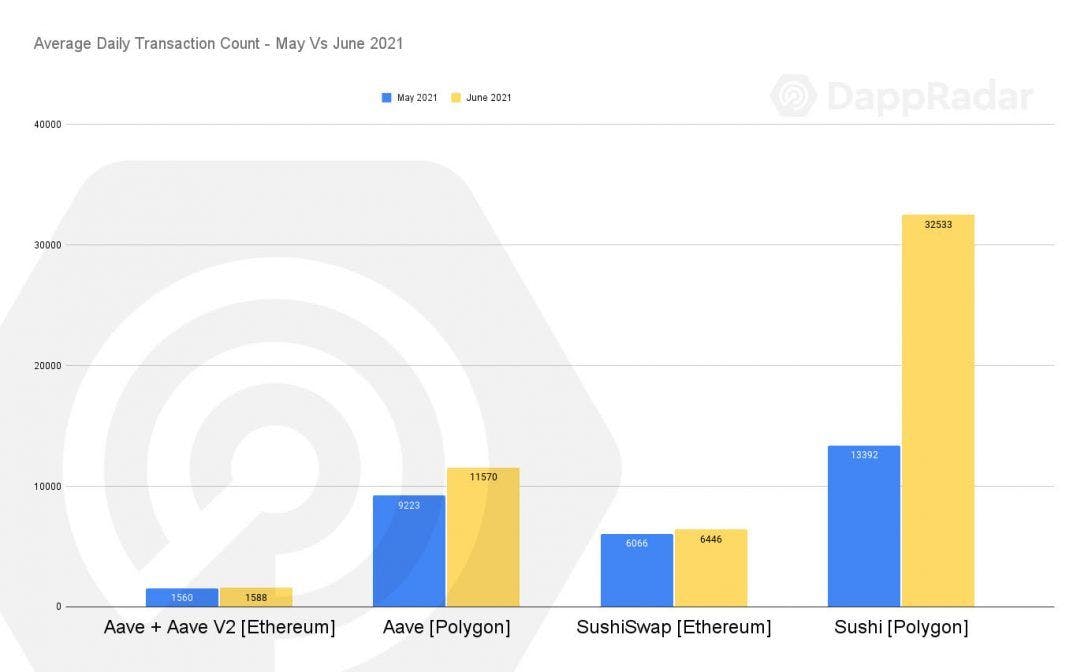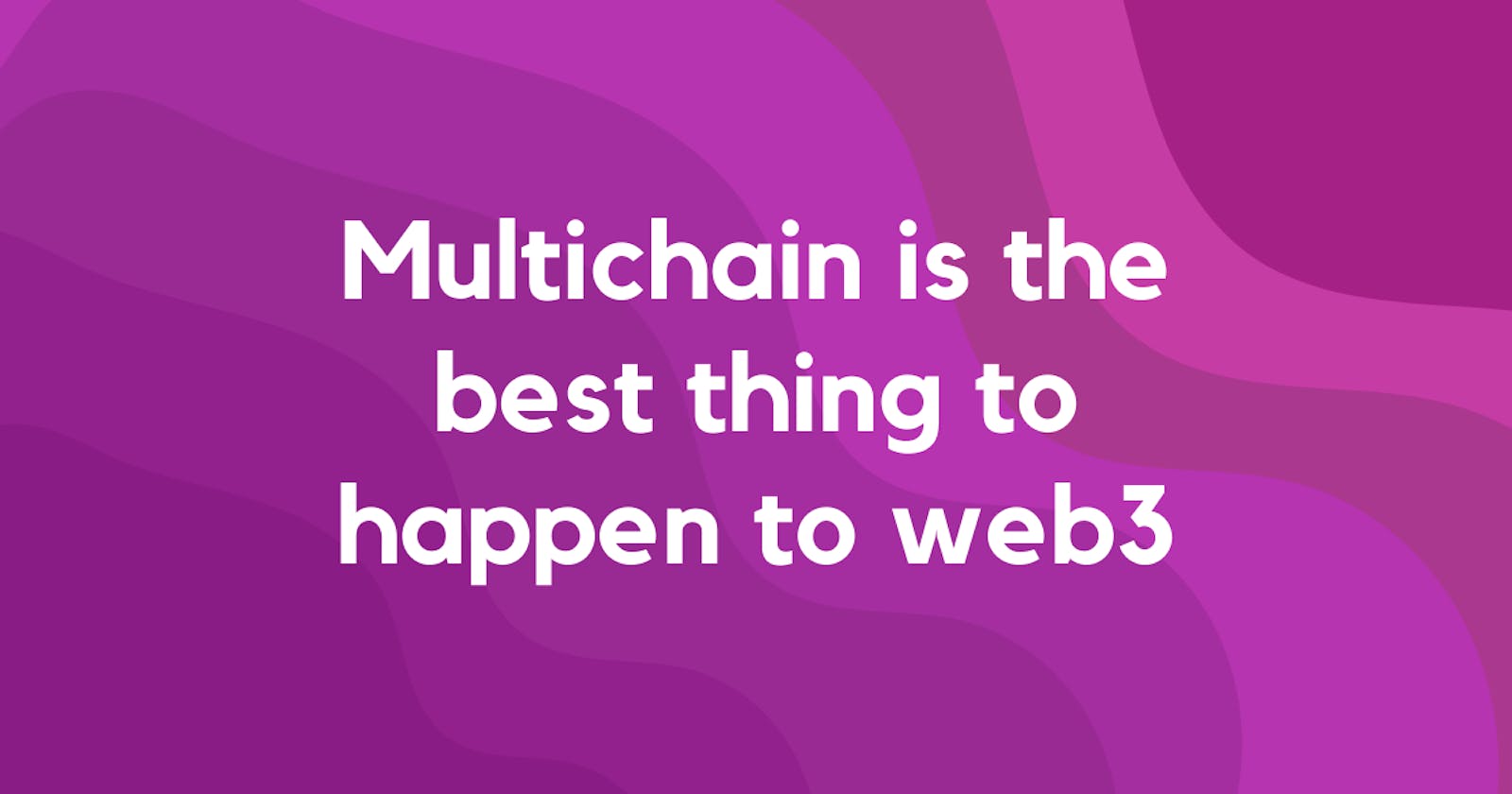Multichain is the best thing to happen to web3
The future is multichain - here's why web3 is doomed without it
Web3 has taken over, with Fortune Business Insights estimating that the enterprise blockchain market will hit almost $25 billion in 4 years. Crypto enthusiasts think this figure is actually an underestimate, claiming that Facebook's move into Meta will explode the blockchain metaverse sphere.

However, this rising popularity has exposed a multitude of issues surrounding security, scalability, and decentralization (read: Blockchain's Biggest Technical Challenge). Blockchain is incredibly difficult to scale whilst remaining secure and decentralized, as we've seen with Ethereum's enormous gas fees this year.
We've already seen multichain become hugely successful in the NFT space, with Solana marketplaces like Solanart and Digital Eyes grow and attract users away from Ethereum marketplaces like OpenSea. Solana boasts a Proof of History consensus algorithm, which allows it to scale easier and faster than Proof of Work blockchains such as Ethereum and Bitcoin. However, there are concerns that it sacrifices decentralization and security in order to do this - so why rely on one blockchain to solve these problems?
Multichain encourages innovation
We've been waiting for years for Ethereum to implement Proof of Stake, an algorithm allowing for faster transactions, cheaper fees, and a greener alternative to PoW. But while we've been waiting:
- Proof of Stake blockchains like Cardano, Algorand, Avalanche, Celo, and hundreds more have launched
- The biggest PoS blockchains have reached a cumulative market cap of well over $100 billion, only a fifth of Ethereum
- Smart contracts can be written for these blockchains without learning a new language, encouraging developers to easily get started building on top
- Celo has particularly moved the space forward, being the first mobile-first DeFi protocol
With multichain, we can explore new technology and move forward much more quickly. A multichain ecosystem encourages innovation, much like a free market (theoretically). But there is one core difference - in a multichain future, blockchains do not compete, they work together.
Sidechains
Different from L2s, sidechains are separate blockchains that link with its parent blockchain. They attempt to solve scalability issues and improve security. They work directly with another blockchain rather than competing, further improving the ecosystem without engaging in monopolistic practices.
Polygon and Plasma are two of the most popular sidechains currently, both helping the Ethereum blockchain ecosystem while adding their own layer of innovation. Polygon is especially awesome, allowing developers to build and connect Ethereum-compatible blockchain networks.
Sushiswap is leading the way for a multichain future, existing on 15 different blockchains. It originally started on Ethereum, but its Polygon solution has recently taken over.

See what happens when blockchains work together? Aave, also on this graph, is a protocol for earning interest on crypto deposits and borrowing assets. It recently went down the multichain route and is gaining traction on both Polygon and Avalanche.
But what about Layer 2s?
There is an argument to be made that we don't need a multichain future, as L2s can solve the scalability, security, and decentralization problems on Ethereum, improving innovation on a separate layer.
Layer 2s differ from sidechains as they are not separate blockchains, but rather handle transactions off of the Ethereum mainnet. An example of a L2 solution you may have heard of is Optimistic Rollup. An rollup is when transactions are committed to the mainnet in batches, ie they are 'rolled up', which helps with transaction speed. The reason they are called 'optimistic' is because aggregators publish only the bare minimum information, assuming the aggregators run without committing frauds, and only providing proofs in case of fraud.
Forgetting Ethereum
Most existing sidechains and L2s currently work with Ethereum, but with these solutions we're still relying on one blockchain - sidechains and L2s do not encourage a true multichain ecosystem.
Focussing purely on Ethereum falls into issues with centralization. Even with L2s and sidechains, we still always rely on the security and governance of the Ethereum mainnet, as well as its ability to integrate with these solutions. If, for example, Ethereum's move into PoS goes terribly wrong, its sidechains and L2s are rendered useless.
Blockchains like Celo and NEAR offer integrations with the EVM (Ethereum Virtual Machine) but still exist and have use cases outside of them. This idea is fundamental to a multichain future.
The existing multichain ecosystem
We've talked about how protocols are building to exist on multiple chains, like Sushi Swap and Aave. This is great, but a multichain future relies on exchanging assets and information cross-blockchain. This allows us to not remain trapped in one blockchain.
Polkadot is one of the biggest movers in this space, a multichain protocol that enables users to transfer data among both permissioned and permissionless blockchains. Polkadot is a network of purpose-built blockchains called parachains. It allows any type of data to be sent between any type of blockchain, meaning apps can not only exist on multiple blockchains, but use different blockchain technologies for different sections of their app. This is key for enterprise adoption.
There are also bridges that allow you to easily transfer assets between blockchains, like Binance Bridge, Polygon Bridge, and NEAR's Rainbow Bridge.
What happens if we don't encourage multichain?
Without multichain, Ethereum will continue to get exponentially more expensive, creating a huge barrier to entry for both users and developers. Sure, we have sidechains and L2s, but the security downsides and risk of centralization with these can drastically discourage potential adoptees. The metaverse will exist entirely within one blockchain, breaking the entire premise of an interconnected virtual world. Web3 innovation will slow down, with so many people and assets relying on one blockchain, skyrocketing the risk of moving forward or updating protocol. Without multichain, there is no future for web3.
Let's build the future. Join the movement on Twitter by using the hashtag #TheFutureIsMultichain!

